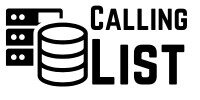SaaS companies often operate with subscription-based models, making customer retention and lifetime value essential. Investing resources into unqualified leads can drain time, effort, and budgets, ultimately hindering growth. Proper lead qualification helps identify high-potential prospects early, allowing sales and marketing teams to prioritize their efforts on those with the highest likelihood of becoming long-term customers. It also enhances customer experience by providing tailored solutions aligned with their needs and readiness to buy.
Benefits of Effective Lead Qualification
- Increased Conversion Rates: Focus italy phone number list on prospects with genuine interest and need.
- Shortened Sales Cycles: Quickly identify and engage the most promising leads.
- Resource Optimization: Allocate sales efforts efficiently, reducing wasted outreach.
- Better Customer Fit: Ensure your product aligns with the prospect’s requirements and budget.
- Higher Customer Satisfaction: Engage prospects who are genuinely interested and prepared to buy.
Key Criteria for Qualifying SaaS Leads
To effectively qualify SaaS leads, companies should evaluate prospects based on several critical factors. These criteria help determine whether a lead is a top 10 places to buy a phone number online good fit and ready for sales engagement.
1. Business Need and Pain Points
The foundation of lead qualification is understanding whether the prospect has a specific problem your SaaS product can solve. Engage with the prospect to uncover their pain points, current challenges, and goals. A good fit exists when your solution directly addresses their needs, whether it’s improving efficiency, reducing costs, or enhancing collaboration.
2. Budget and Investment Readiness
Assess whether the prospect has the financial capacity to invest in your SaaS solution. Understanding their budget constraints early on prevents wasted effort and allows you to tailor your messaging accordingly. Sometimes, prospects may need internal approval or a phased approach, so knowing their financial situation helps set expectations.
3. Decision-Making Authority
Identify who the decision-makers and stakeholders are within the organization. SaaS sales often involve multiple levels of approval, from end-users to C-level belgium numbers executives. Establishing contact with the right decision-makers ensures your efforts are directed toward those who can authorize purchase and influence the process.
4. Timeline and Urgency
Determine the prospect’s timeframe for implementation and decision-making. Some organizations may have immediate needs, while others plan for future upgrades. Early identification of urgency allows you to prioritize leads that align with your sales cycle and resource availability.
5. Fit with Your Product
Evaluate how well the prospect’s technical environment, team size, and operational needs match your SaaS offering. For example, scalability, integrations, and user capacity should align with their requirements. A good product fit increases the likelihood of successful onboarding and long-term retention.
Best Practices for SaaS Lead Qualification
Implementing a structured lead qualification process maximizes efficiency and effectiveness. Here are some best practices to consider:
1. Use a Qualification Framework
Develop a scoring system or qualification matrix based on the criteria above. Assign points or levels to each factor to objectively evaluate leads, helping your team prioritize high-quality prospects.
2. Leverage Marketing Automation and CRM
Integrate your marketing automation and Customer Relationship Management (CRM) systems to capture lead information, track interactions, and identify signals of buying intent. Automated workflows can help nurture leads while assessing their readiness.
3. Conduct Discovery Calls
Schedule discovery calls to ask targeted questions about the prospect’s needs, budget, decision process, and timeline. This direct engagement provides deeper insights and builds rapport.
4. Qualify Continuously
Lead qualification isn’t a one-time event. Regularly revisit and update lead status based on new interactions, product demos, or changes in the prospect’s situation. This ongoing process ensures your sales pipeline remains accurate and actionable.
5. Collaborate Between Sales and Marketing
Ensure alignment between sales and marketing teams to define qualification criteria, share insights, and develop targeted messaging. Collaboration enhances the quality of leads and shortens sales cycles.
